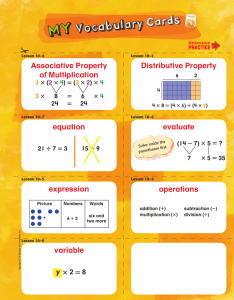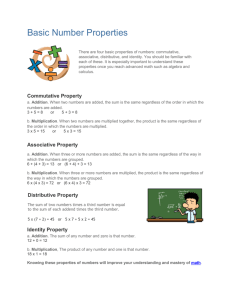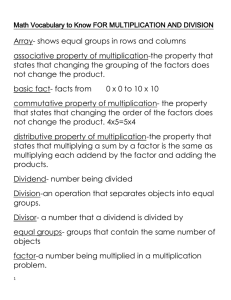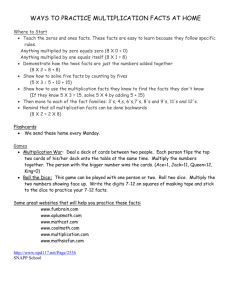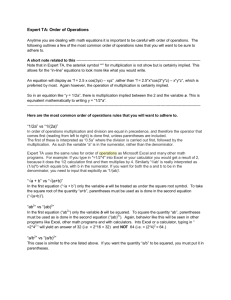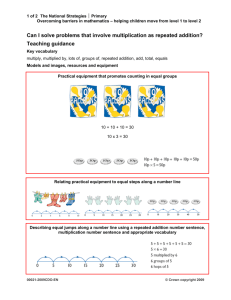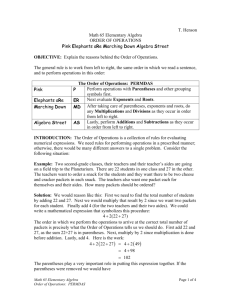It`s the Law:Properties of Real Numbers
advertisement
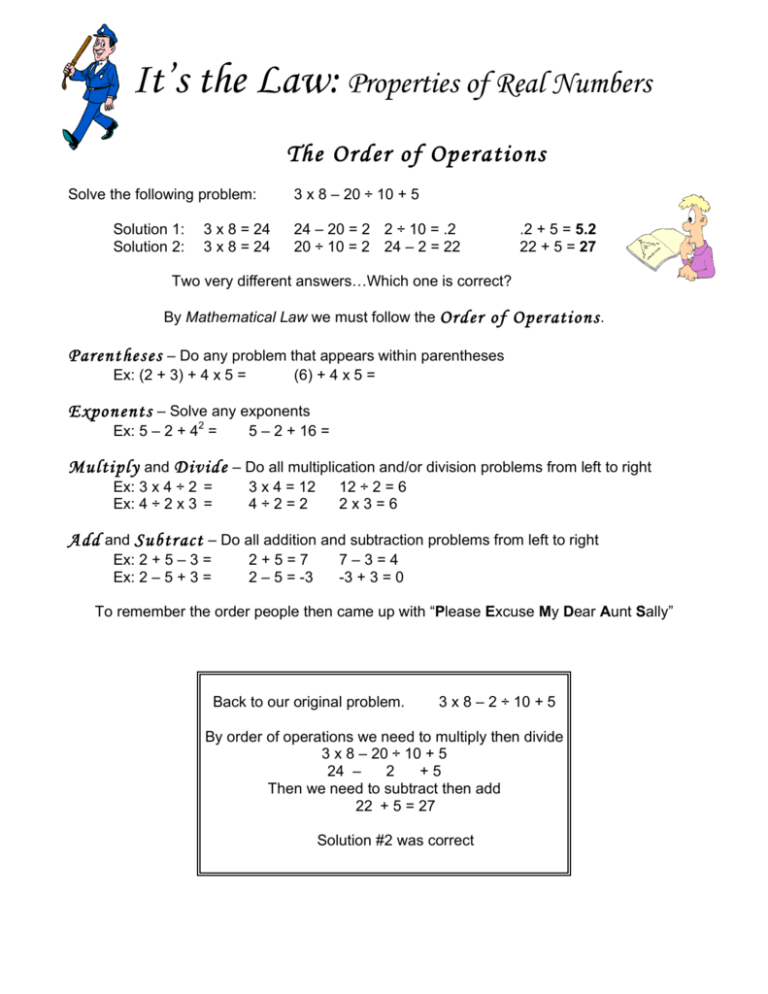
It’s the Law: Properties of Real Numbers The Order of Operations Solve the following problem: Solution 1: Solution 2: 3 x 8 = 24 3 x 8 = 24 3 x 8 – 20 ÷ 10 + 5 24 – 20 = 2 2 ÷ 10 = .2 20 ÷ 10 = 2 24 – 2 = 22 .2 + 5 = 5.2 22 + 5 = 27 Two very different answers…Which one is correct? By Mathematical Law we must follow the Order of Operations . Parentheses – Do any problem that appears within parentheses Ex: (2 + 3) + 4 x 5 = (6) + 4 x 5 = Expon ents – Solve any exponents Ex: 5 – 2 + 42 = 5 – 2 + 16 = Multiply and Divide – Do all multiplication and/or division problems from left to right Ex: 3 x 4 ÷ 2 = Ex: 4 ÷ 2 x 3 = 3 x 4 = 12 4÷2=2 12 ÷ 2 = 6 2x3=6 Add and Subtr act – Do all addition and subtraction problems from left to right Ex: 2 + 5 – 3 = Ex: 2 – 5 + 3 = 2+5=7 2 – 5 = -3 7–3=4 -3 + 3 = 0 To remember the order people then came up with “Please Excuse My Dear Aunt Sally” Back to our original problem. 3 x 8 – 2 ÷ 10 + 5 By order of operations we need to multiply then divide 3 x 8 – 20 ÷ 10 + 5 24 – 2 +5 Then we need to subtract then add 22 + 5 = 27 Solution #2 was correct Zero Property of Multiplication states that any number multiplied by zero is equal to zero. 5x0=0 0x9=0 33 x 8 x 0 = 0 Identity Property of Addition or Multiplication states that any number added to zero or multiplied by 1 is equal to the original number. It’s like looking into a mirror, same image comes back through. 4+0=4 0 + 72 = 7 23 x 1 = 23 1x9=9 Inverse Property of Multiplication states that any number multiplied by its inverse is equal to 1. 1 3 4 7! =1 ! =1 7 4 3 Commutative Property of Addition or Multiplication states that no matter what order the addends or factors appear they both will equal the same sum or product. John is talking to Suzy. Suzy is talking to John. They are both talking to one another. 5 + 7 = 7 + 5 = 12 4 x 9 = 9 x 4 = 36 Associative Property of Multiplication or Addition states that no matter what the grouping of the addends or products they both will equal the same sum or product. (4 + 3) + 7 = 4 + (3 + 7) = 14 2 x (6 x 3) = (2 x 6) x 3 = 36 Distributive Property states that multiplying a sum by a number gives the same result as multiplying each addend by the number and then adding the products together. The outside number gets distributed to each inside number. 5 x (3 + 4) = 5 x 3 + 5 x 4 = 35 2 x (5 + 9) = 2 x 5 + 2 x 9 = 28


